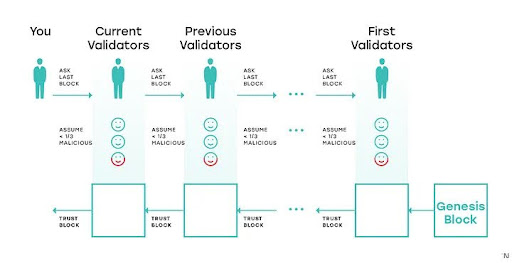Last week, as I was scrolling through the Internet, I happened to stumble across a piece where the founder of Ethereum, Vitalik Buterin, has been reiterating the importance of L2s as a scaling layer for Ethereum despite some of the other L1s achieving near unprecedented throughput. I seemingly sensed that there was something rotten in the state of the crypto L1s. In this piece, I have shared my views on the same:
Sharding Round the Corner: Who Bats An Eye for L2s
Rationally speaking, if you have a plan A and it is going well; would you still be interested to judiciously investing in Plan B as a rescue? You wouldn’t do that until and unless you preempted that something could go off-track, and at that point, you need something that can rescue you from the embarrassment. As far as sharding goes, the equation fits well, and that’s why Ethereum Roadmap is getting updated with compatibility and redesigning of key components to make a power-ready Zk-EVM scaling solution.
Why do L2s Matter for Ethereum Scaling?
The recipe of perfection identifies that despite providing the best solutions, you should be prepared to evolve with time. As far as sharding goes, we have already seen that with 64 shards, Ethereum is struggling on three fronts:
- Scalability
- Data availability
- Data validity
Now, it might occur to you that the sole purpose of sharding was to increase TPS and SSF or single slot finality, but despite that fact, why is criticism floating around scalability? The core reason for this is that with 64 shards, Ethereum can only process 1,280 transactions per second. Comparing the same with Visa Network, it can process 24,000 TPS. So, the scalability is the missing piece despite the sharding, and what’s even more insulting is that sharding has been compromising security to a certain threshold.
How?
We have already learned that if 1/3rd of the nodes choose to stay honest, the network will not be compromised. And that’s where sharding opens a point of failure. Let’s explain that. As you already know, when speaking of sharded chains, one of shareded chains cannot validate the state of the other sharded chains because they are not interconnected. As a result, it opens the possibility of exploiting the majority network attack through canonical chains. How will an attacker orchestrate that? Let’s take one single chain with 200 Validators validating the blocks. Would it be simple to compromise the network with 200 validators? Or would it be simple to compromise the network with 200 validators distributed across 64 shards? Or, 3 validators for each shard after the division. In case of compromising 3 validators, you need very few resources.

So, now, the possibility of corrupting the network increases manifolds. Now, it is here where, ideally, the efficacy of the L2s or the Rollups make so much sense.
How do rollups maintain security, Scaleability, and decentralisation reason why Vitalik Buterin has been reiterating that roll-ups will be an added layer on top of the sharding, as demonstrated through this tweet,


This is because rollups did not just help the Ethereum Network scale but they also did that without compromising composability, interoperability, and decentralisation. The next generation of rollups is introducing hyperlanes, wormholes, and messaging protocols. Along with this, they are providing the much-needed modularity that applications need to adjust as per their changing business dynamics. Hence, rollups are ending up as a go-to solution for the Ethereum chain, where they still maintain the relevancy of Ethereum because Ethereum is used as a Consensus and Settlement layer. At the same time, since they can execute sequencers on their ecosystem and after the idea of a decentralised sequencer set for rollups, they have further fortified the network’s security. Hence, for meeting the 100,000 of the TPS limit as proposed under the Ethereum RoadMap as demonstrated through this image.

Rollups will be an intrinsic part of the Ethereum ecosystem, which cannot be invalidated.
In navigating the complex landscape of Ethereum’s scaling challenges, we can help you facilitate seamless integration and optimisation. VE3 stands as a catalyst for actively shaping the landscape of blockchain scalability and performance. To know more, explore our innovative digital solutions or contact us directly.


















